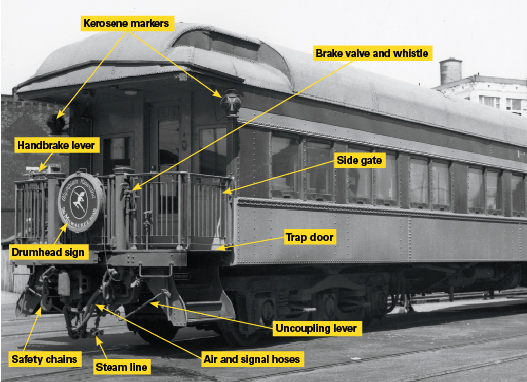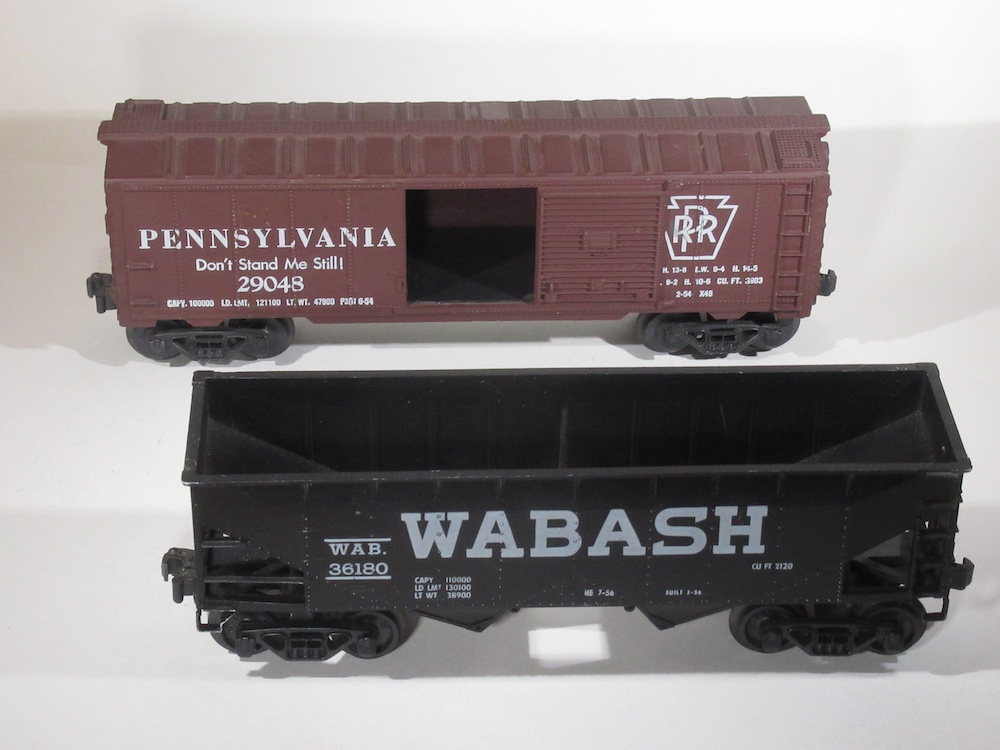
A number of details are visible that appear on most cars of the heavyweight era. Most important is the train’s flagman has hung a pair of kerosene marker lights on brackets built into the upper corners of the car end. These lamps mark the end of the train and normally display red lenses to the rear with either yellow or green lenses showing to the front and side. The use of yellow or green lenses was a railroad option, but the red lens always faced to the rear unless a train was stopped clear of the main line and had the red lenses turned inward.
Most name trains carried a lighted drumhead sign that was hung on the observation end railing or the end gate of the last car in the consist. Lightweight observation cars normally had brackets for this purpose.
These colorful signs were painted on translucent glass mounted in a sheet-metal sign box. The sign was illuminated by small lamps inside and a power cord was plugged into a nearby outlet to operate the sign at night or when the train was standing under a trainshed.
The end platform railing had gates on each side and one in the middle that were hinged to swing inward and latch against the main railing. Trap doors on both sides could be opened by a trainman to expose the steps below if anyone had to get on or off the train.
An airbrake valve was mounted on the railing next to the large stanchion so a trainman could control a back-up move from the platform. A small, but very loud, “peanut” whistle was part of this installation to warn anyone near the track of the backup move. A handbrake lever was mounted on the opposite side to secure the car when it was parked.
A pair of heavy-duty safety chains flank the coupler. These chains were hooked together between the coupled cars to prevent a separation if a coupler knuckle failed on a moving train.
Two air hoses appear alongside the coupler. One is part of the train’s air brake system while the other is a smaller diameter signal line that activates a small whistle in the locomotive cab. A steam pipe with flexible joints is also in the same area under the coupler.
Because of the close spacing between the rear platform and the coupler, this observation car is fitted with bottom-operated uncoupling levers with their operating handles mounted on the steps.













